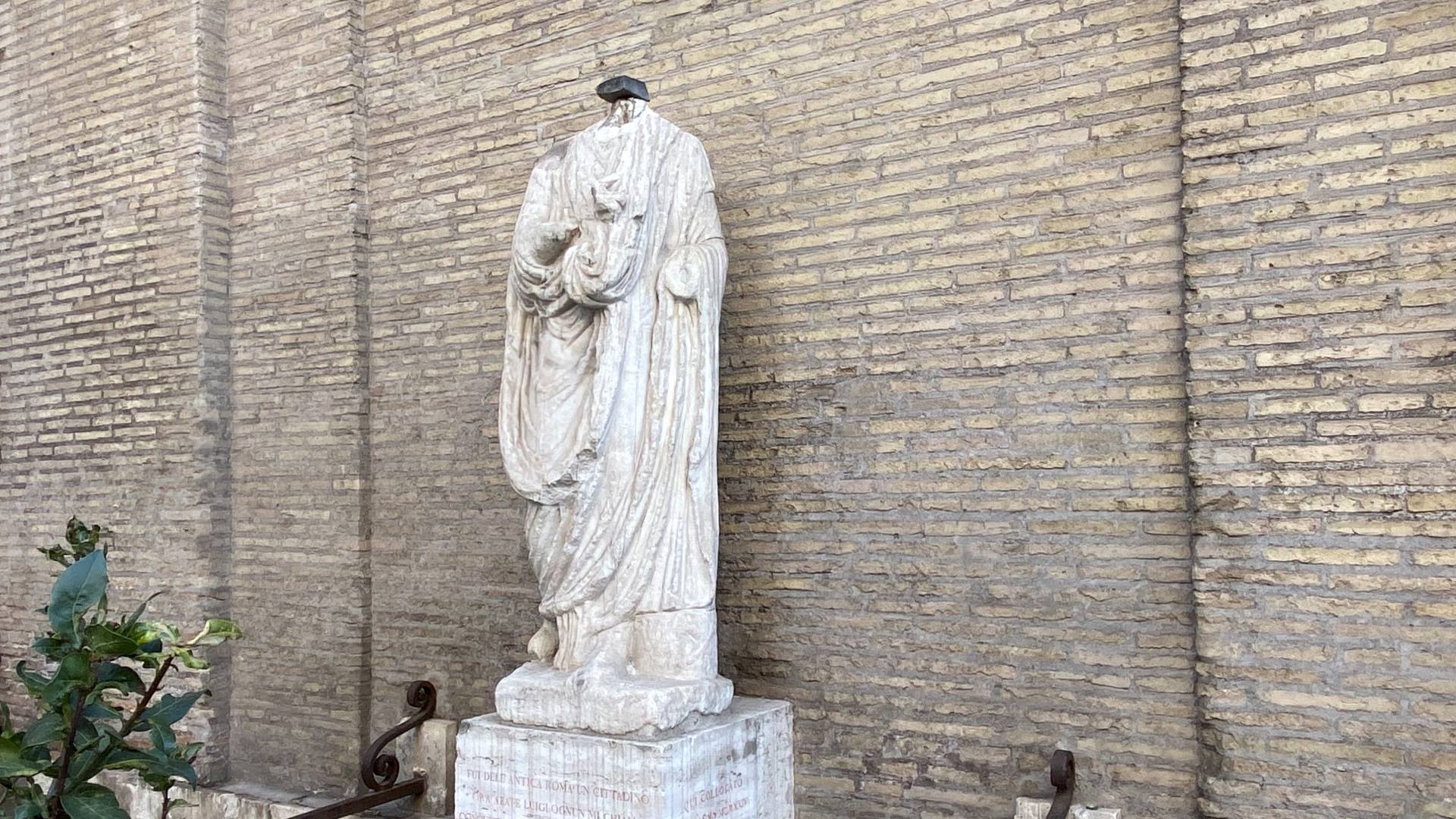
In the Rione Sant'Eustachio, in Piazza Vidoni, stands the original late Imperial period statue depicting a man in a toga, perhaps a magistrate.
The sculpture is one of the famous talking statues located in the historic centre of the capital, also known as the Congress of Wits. In the Rome of the Popes, Abbot Luigi became, with Marforio, the Babuino, the Porter, Madama Lucrezia and Pasquino, were used to express in an original way people criticism. At night, Roman people placed the pasquinate, anonymous satirical verses to be read by passers-by the following morning.
The work underwent numerous transfers. It was initially located in Palazzo Caffarelli-Vidoni, then in the courtyard of Palazzo Chigi, and in a niche in the staircase of Palazzo Caffarelli-Vidoni. In the 1920s, it was finally placed next to the church of Sant'Andrea della Valle.
The statue probably takes its name from the similarity with a witty sacristan of the nearby church of the Santissimo Sudario. It is headless, almost life-sized, depicted in a tunic and a large toga, with the right arm bent and the hand resting on the chest. On the base is a curious inscription of the historian Giuseppe Tomassetti, commissioned by Prince Giustiniani Bandini, one of the owners of Palazzo Vidoni: “Fui dell'antica Roma un cittadino ora Abate Luigi ognun mi chiama conquistai con marforio e con pasquino nelle satire urbane eterna fama ebbi offese disgrazie e sepoltura ma qui vita novella e alfin sicura”.
Information
 Condividi
Condividi
Location
To find out about all accessibility services, visit the Rome accessible section.











































